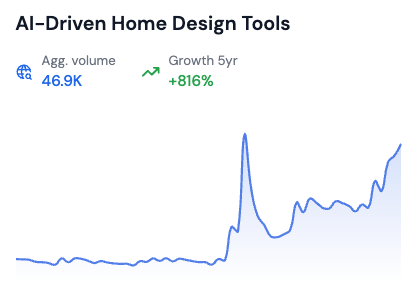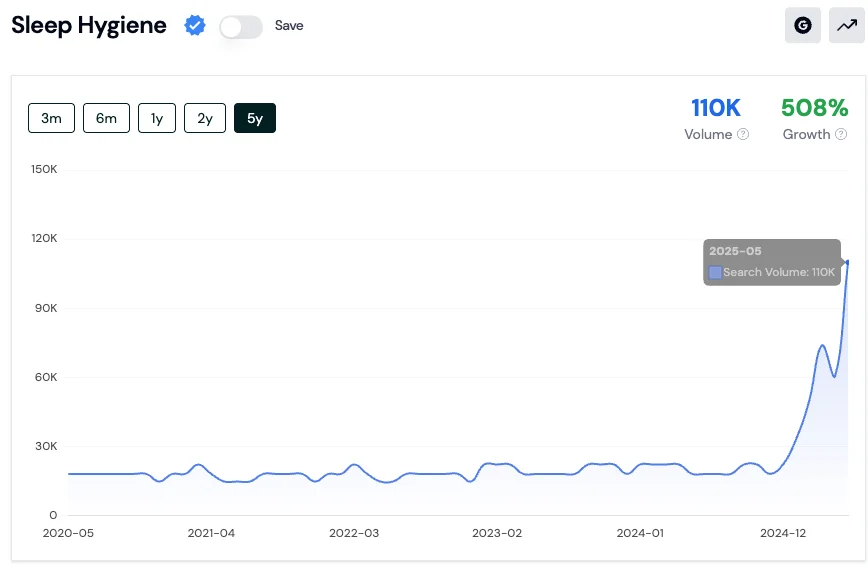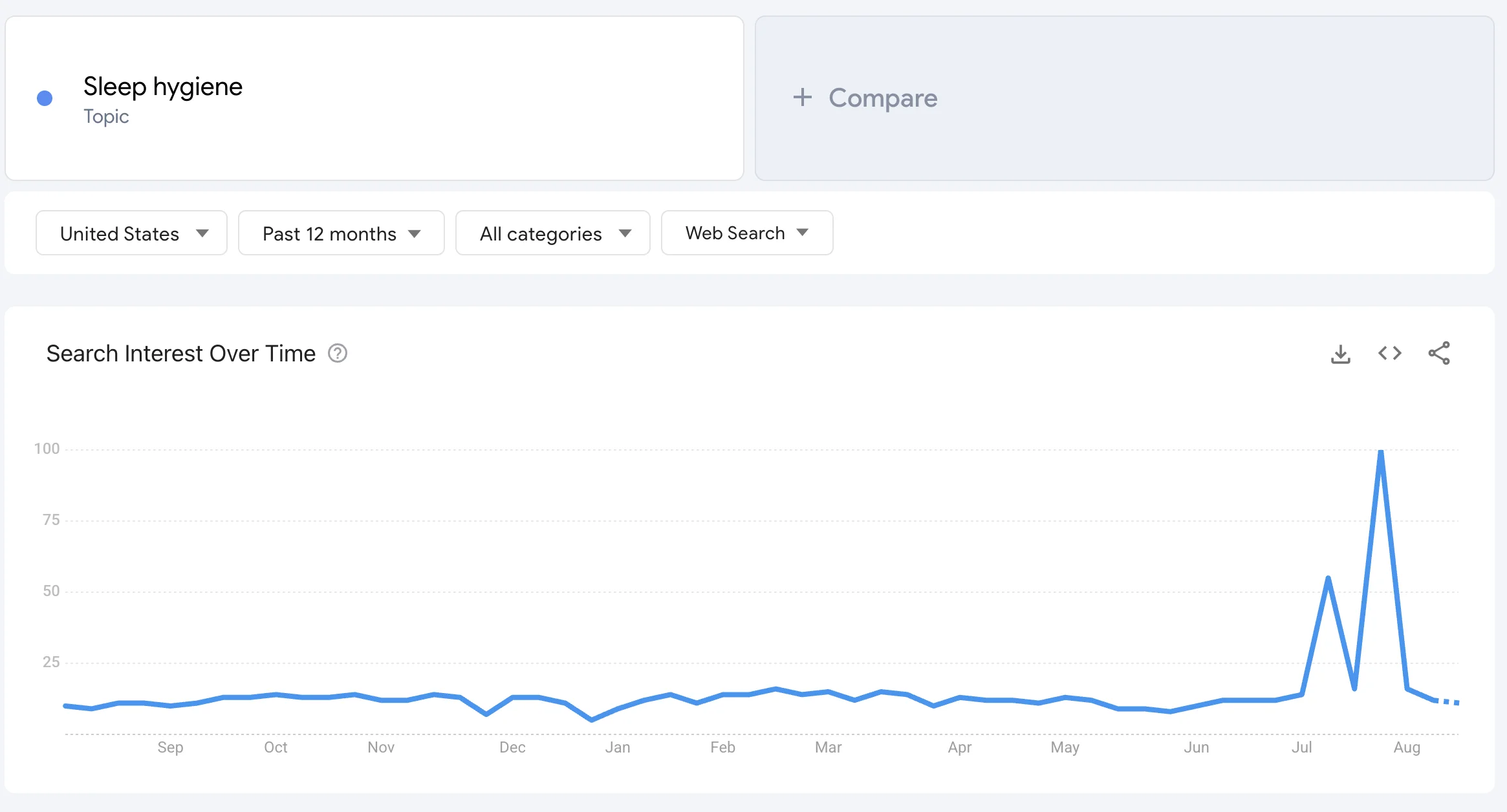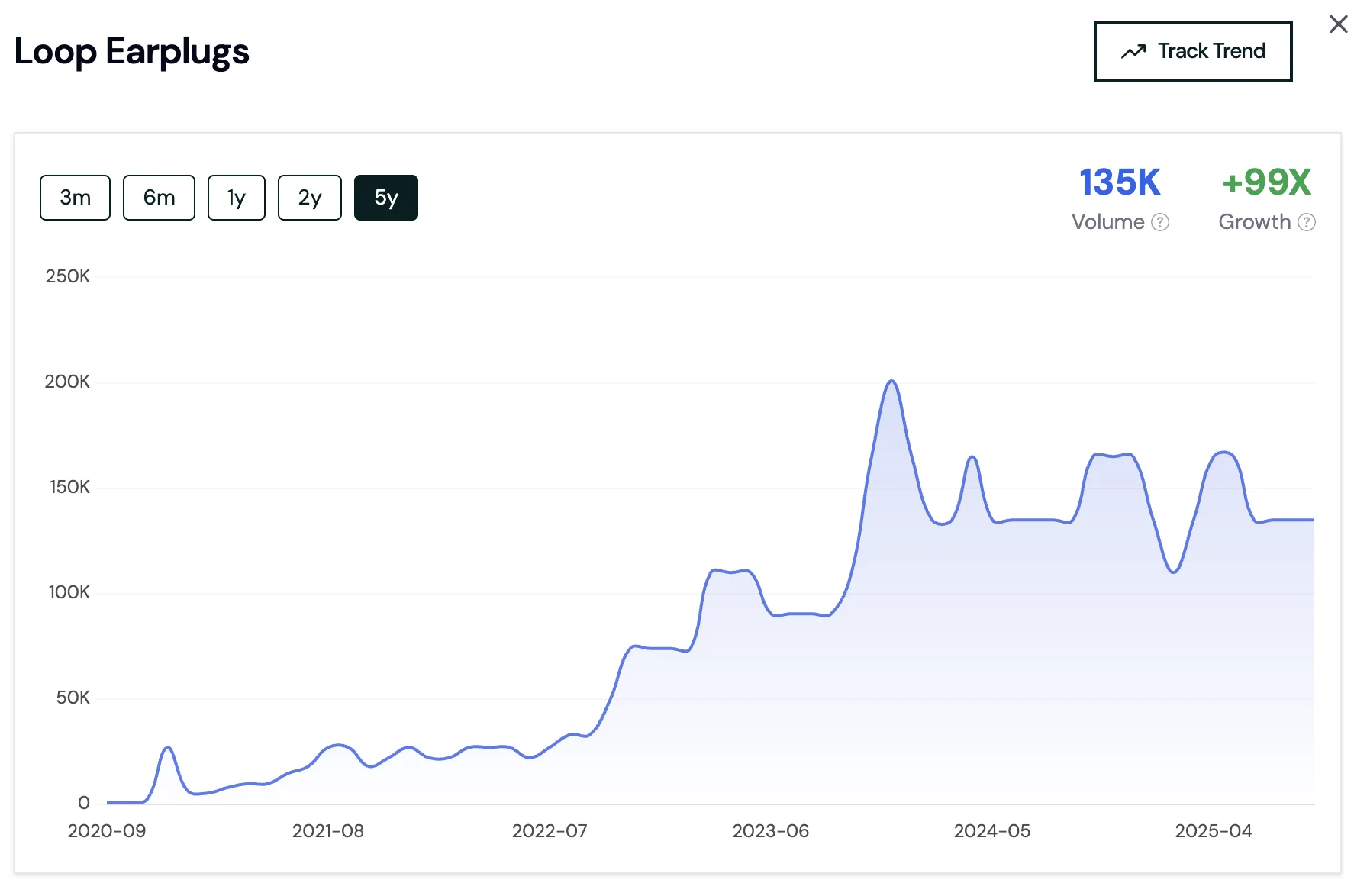

What is sleep hygiene?
Sleep Hygiene, spotted by RisingTrends.co, is the newest self-care wave turning bedroom routines into a social-media sport.
For years, doctors begged us to ditch late-night screens and keep the bedroom cool. Lately the message finally stuck.
Social momentum
Searches for “sleep hygiene” on Google are up more than 200 percent since February, and TikTok feeds are packed with creators timing their caffeine cutoffs, misting lavender sprays, and bragging about 8:30 p.m. wind-downs.

One of the most-watched walk-throughs comes from Dr. Justin Dixon, who reminds 2.1 million viewers that “no phone in bed” is non-negotiable (see the clip).
A parallel spike shows up in newsroom analysis: The nonprofit Global Wellness Institute calls sleep “the dominant wellness currency of 2025,” noting a jump in consumer spending on smart mattresses and snore trackers (report).
Why now?
Experts point to a perfect storm of restless nights.
The American Sleep Foundation says four in ten adults report “sleep debt” every week (stats). Pair that with cheaper wearable tech—an Oura ring or a budget smart band can log REM cycles in real time—and people suddenly have numbers to prove they’re tired.
On TikTok, the hashtag #sleephygiene has crossed 500 million views as creators like @medifectious run side-by-side experiments with blackout curtains and blue-light glasses (demo). The bite-size videos make sleep science feel actionable: dim lights at 9, warm shower at 9:15, journal at 9:30. A routine you can copy in 60 seconds is social-media gold. Creating the optimal sleep environment often involves home design improvements - for broader insights into how living spaces are evolving, see our analysis of top home improvement and design trends.
Diet plays a crucial role alongside rest in overall wellness optimization. The intersection of nutrition and sleep is becoming increasingly important, with trends like functional beverages and targeted nutrition supporting better rest. Discover more about these nutritional wellness trends that are transforming how consumers approach health and self-care.
Business response
Businesses are sprinting to keep up. Mattress-in-a-box brands now ship “sleep starter kits” that bundle breathable sheets, weighted blankets, and a QR link to guided breathing tracks. Beauty labels, watching their evening serums turn into bedtime props, repackage night creams as “circadian rhythm support.” Even hotels want in: Hilton’s new Tempo line offers “power-down rooms” where guests reserve a white-noise playlist at check-in.
Marketing implications
For marketers, the takeaway is clear: sleep is morphing from a neutral state into an aspirational lifestyle, complete with hero products and shareable rituals. Still, clinicians warn against reducing health to gadgets alone. The Sleep Foundation’s guide to good sleep hygiene stresses basics—consistent bedtimes, no late coffee, sunlight on waking—before any luxury add-ons (primer).
Brands that skip the science risk backlash from a public that now checks PubMed as readily as Instagram comments. The most credible campaigns feature medical advisors or publish internal data—think allergy-free pillow companies releasing third-party dust-mite counts. Early signs suggest consumers reward transparency: TikTok creator Aiden Heaney’s unboxing of a budget sunrise lamp drew 1.4 million views and thousands of “this actually works” replies (video).
Outlook
The next 12 months could see sleep hygiene move from trend to norm, pushing workplaces to offer "rest stipends" and public schools to teach freshman-year sleep science—so the real question is, when everyone is obsessed with better z's, who will still brag about pulling an all-nighter?
For a comprehensive, data-backed look at the full sleep economy – from magnesium threonate supplements to grounding sheets to mouth taping – explore our top sleep trends for 2026, featuring 50+ trending topics ranked by search volume and growth rate.



